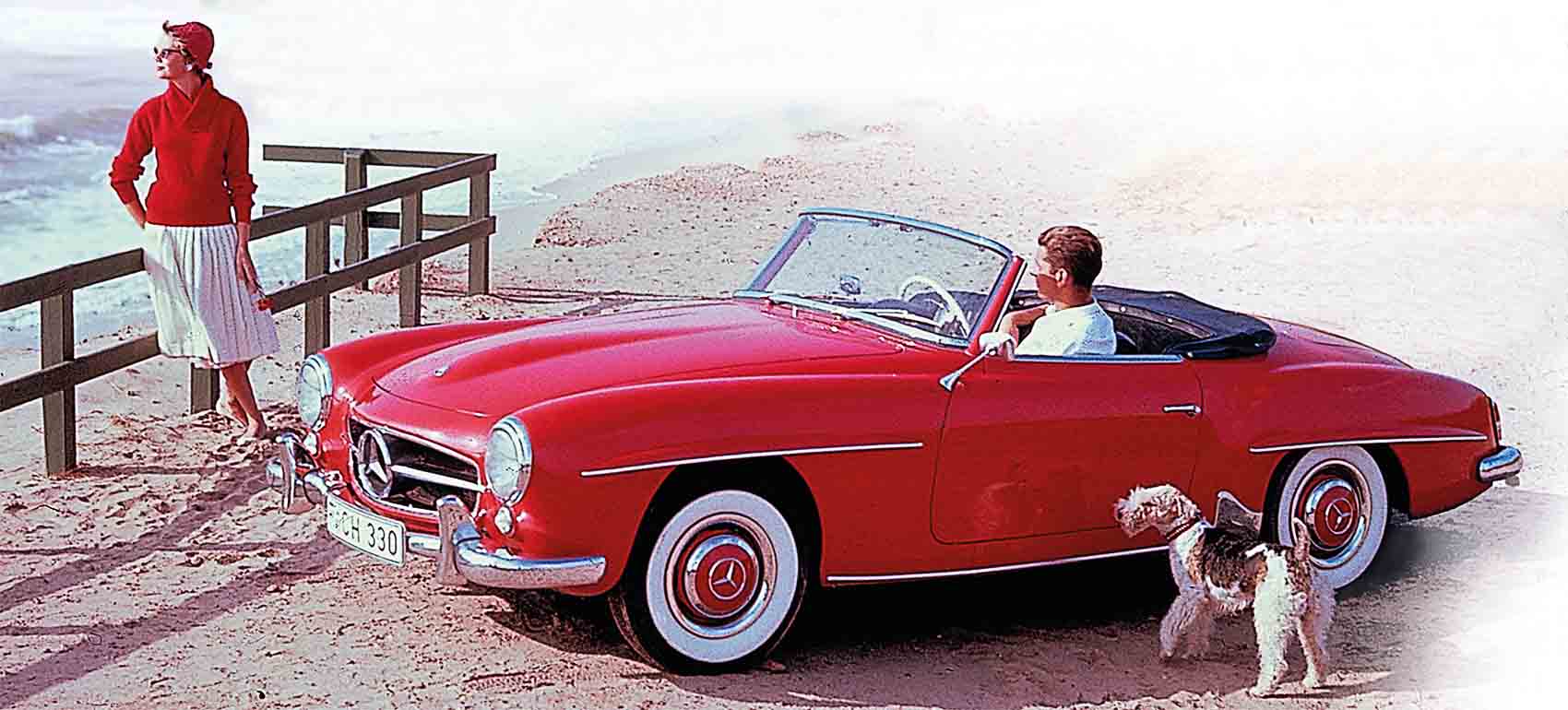
Great Marques—The Mercedes Story
The two founding fathers of the motor car industry came together when Daimler and Benz merged in 1926—the two companies’ founders had effectively invented the automobile. In addition to being a luxury marque, Mercedes-Benz, the company formed by the merger, has since laid a trail of industry-leading innovation.
“It is a temple to mankind’s power to think and imagine and strive for progress.”
CARL BENZ, WRITING ABOUT A DISPLAY OF BENZ CARS IN THE DEUTSCHES MUSEUM, 1925
THERE IS NO RECORD OF CARL BENZ (1844-1929) and Gottlieb Daimler (1834-1900) ever having met while they were independently developing their first cars. Benz’s three-wheeled “Motorwagen” was patented in Mannheim, on 29 January 1896. Its single-cylinder, four-stroke internal combustion engine ran on gas.
Cannstatt engineer, Gottlieb Daimler’s, gasoline-powered engine was running in 1883. He initially installed his invention in a primitive motorcycle (demonstrated for the first time in 1885) and then in an adapted carriage a year later. Benz was the first to sell cars to the public, in 1888, with Daimler following in 1892.

This example of the popular “Ponton” series is shown on the runway at Frankfurt Airport in 1958.
A year later, the all-new Benz Velo became the world’s first production car, offering pivoting axles, two seats, and four wheels. However, it was the 1901 Daimler 35 hp that truly set the pattern most successful car-makers copied: a pressed steel chassis frame; occupants behind the engine (a four-cylinder unit, under a bonnet with a honeycomb radiator ahead of it) rather than sitting above it; an aluminium crankcase set in line; a gate gear-shift mechanism; foot throttle; and a steering wheel on a raked column. Thanks to its lowered centre of gravity, the vehicle was a revelation in roadholding. Moreover, the car was marketed under the Mercedes brand, and was named after the daughter of Emil Jellinek, the brilliant sales agent who had exclusive rights to sell Daimler’s cars, including the 60 hp model of 1903, with its advanced overhead-valve engine. Benz’s Blitzen racing car, designed by Ferdinand Porsche, held the world land speed record from 1909 to 1924, stretching it to 141 mph (228 km/h). Benz and Porsche also pioneered supercharging (1927’s Mercedes-Benz SSK was the most formidable sports car available). Meanwhile, Mercedes created a range of cars in several sizes.

This two-door, luxury roadster was available either as a softtop convertible or with a removable hardtop.
The merged partners complemented each other well. Car manufacture took place in Stuttgart, and Mercedes-Benz in Nazi-ruled 1930s’ Germany built mostly large, powerful cars, such as the 540K roadster and the“Grosser Limousine.”
Recovery from World War II was slow. The prewar 170V was back in production in 1946, followed by the luxurious 300 series in 1951.
1953’s W120 series, known as the Ponton for its full-width styling, was an all-new, four-cylinder saloon with unitary construction and, soon, diesel and six-cylinder petrol options. By 1958 the firm was making 100,000 cars a year.
With its W125 the company dominated European car racing in the 1930s. The W154 of the 1950s picked up this winning streak, giving Juan Manuel Fangio his second World Championship in 1954. The 300 SL, which won the 1952 Le Mans race, went on to become the ultimate road-going sports car, the first car ever with gullwing doors and standard fuel injection. By 1955, however, Mercedes had axed its racing program after crash debris killed 83 spectators at Le Mans. Mercedes’ driver Pierre Levegh (in a 300 SLR) was also killed.

This version of the long-lived S-Class, codenamed the W126, was a paragon of both aerodynamic efficiency and occupant safety.
In 1959 the Fintail 200/300 series, the first car to have scientifically designed crumple zones, replaced the Ponton. This standard mid-range Mercedes would be replaced in 1967, 1976, and 1985 in steady evolution.
The 190 SL roadster arrived in 1955 and was popular despite its leisurely performance. Fuel injection, used in its 1963 replacement, the 230 SL, made for a feistier performer. Along with timelessly broad styling, the model had a dished hardtop roof.
Highlights of the 1980s included the world-first use of airbags to the aerodynamic S-Class in 1981. A new SL in 1989 was the first car with an innovative pop-up rollover bar.
Between 1998 and 2007 Mercedes-Benz had an ill-fated alliance with Chrysler. It also acquired the Smart city car venture, brought out the A-Class Golf-size family hatchback, and revived the Maybach marque. AMG was recently absorbed into Mercedes as their in-house high performance division.
It is a quote. The Classic Car Book – The Definitive Visual History 2016




